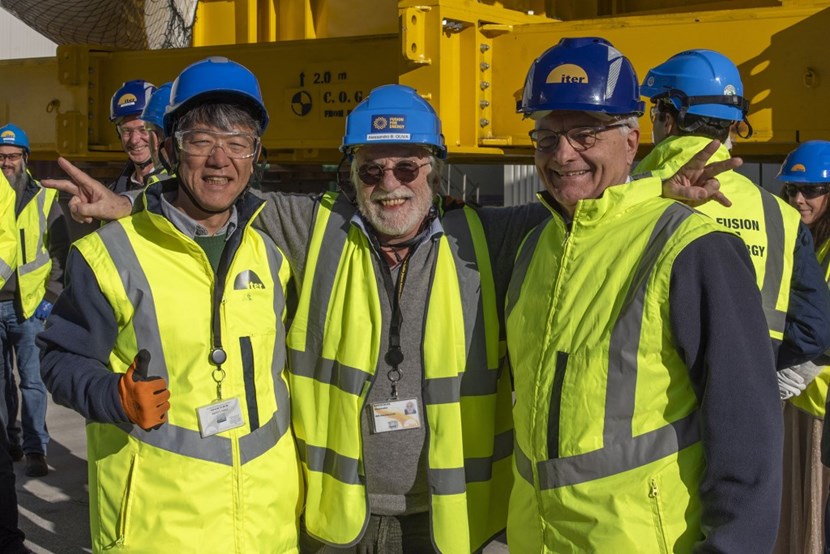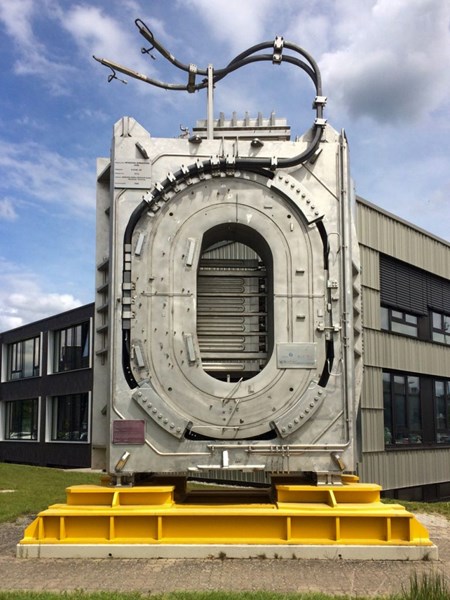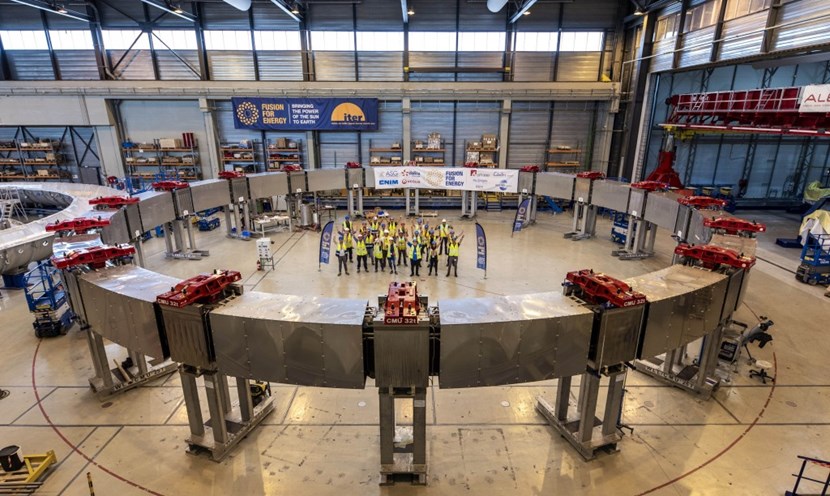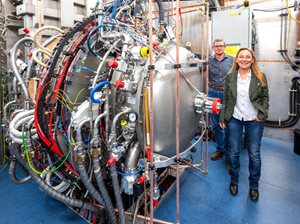
The delivery of toroidal field coil #18, on 15 December 2023, marked the completion of the project-wide effort to procure 19 D-shaped coils (including one spare) for the ITER machine. For Sandro Bonito-Oliva (centre), who oversaw the European procurement of 10 magnets, but also for Norikiyo Koizumi (left), his counterpart at the Japanese Domestic Agency, it was mission accomplished! Both men are now bringing their expertise to the ITER Organization as Tokamak Program Manager and Tokamak Deputy Project Leader respectively within the ITER Construction Project headed by Sergio Orlandi (right).
The delivery of the massive component marked the completion not only of the European procurement program, but that of the project-wide effort to procure 19 D-shaped coils (including one spare) for the ITER machine. For Alessandro, who had managed the magnets program of the European Domestic Agency for more than 15 years, it was "mission accomplished." As part of the ITER Organization now, "Sandro" will oversee the integration of the coils into the machine—a potent illustration of the push to ensure that competencies developed in the ITER Domestic Agencies are not lost during the machine assembly phase.

In the mid 1990s, Sandro participated in the manufacturing of a model toroidal field coil for the projected ITER machine. Although one-third smaller and of a different shape than the final components, the model ''was totally relevant from a technological point of view.'' The model coil is on display outside the Institute of Technical Physics (Karlsruhe Institute of Technology) in Germany.
Following that experience Sandro moved to Oxford Instruments in 1997, a major actor in the field of superconducting magnets where he was to spend close to 10 years, followed by a stint at the National High Magnetic Field Laboratory in Florida. The early ITER experience however had struck a chord. "I had this dream of going back to the ITER project and completing the job started with the model coil and being responsible for the development and production of the actual toroidal field coils."

Inside the ''large onsite factory'' put together to accommodate the manufacturing of the four largest ITER poloidal field coils, representatives of the European Domestic Agency Fusion for Energy and its six contractors celebrate the finalization, in July 2023, of poloidal field coil #4.
A new idea began to grow as Sandro spent six months in Naka, Japan, working on the 








